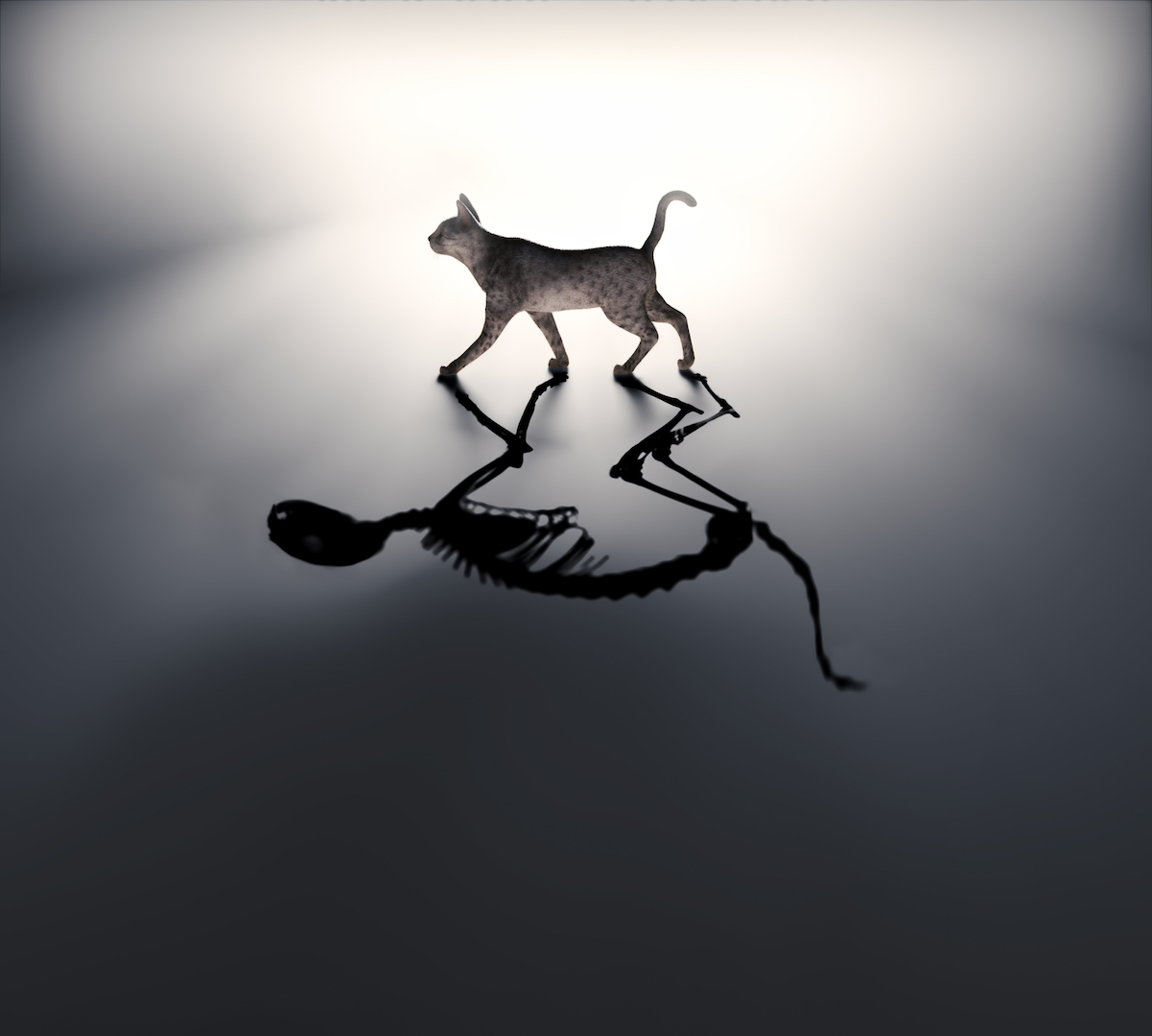Schrödinger's cat: The favorite, misunderstood pet of quantum mechanics
Reference article: A brief, simple explanation of Schrödinger's cat.

The thought experiment known as Schrödinger's cat is one of the most famous, and misunderstood, concepts in quantum mechanics. By thinking deeply about it, researchers have come to spectacular insights about physical reality.
Who came up with Schrödinger's cat?
The Austrian physicist Erwin Schrödinger, who helped found the discipline of quantum mechanics, first conceived of his feline conundrum in 1935 as a commentary on problems originally posed by the luminary Albert Einstein, according to an article in Quanta Magazine.
While developing their new understanding of the subatomic realm, most of Einstein and Schrödinger's colleagues had realized that quantum entities exhibited extremely odd behaviors. The Danish physicist Niels Bohr championed an understanding that particles like electrons did not have well-defined properties until they were measured. Before that, the particles existed in what's known as a superposition of states, with, for example, a 50% chance of being oriented "up" and a 50% chance of being oriented "down."
Einstein, in particular, did not like this indecisive explanation. He wanted to know how, exactly, the universe knows that someone is measuring something. Schrödinger highlighted this absurdity with his notorious conceptual cat.
Suppose one builds a strange contraption, Schrödinger wrote in a 1935 paper called "The Current Situation in Quantum Mechanics." The apparatus consists of a box with a sealed vial of cyanide, above which is suspended a hammer attached to a Geiger counter aimed at a small lump of mildly radioactive uranium. Inside the box, there's also a kitty (and remember, this is a thought experiment that's never actually been carried out).
The box is sealed, and the experiment is left to run for some set amount of time, perhaps an hour. In that hour, the uranium, whose particles obey the laws of quantum mechanics, has some chance of emitting radiation that will then be picked up by the Geiger counter, which will, in turn, release the hammer and smash the vial, killing the cat by cyanide poisoning.
According to folks like Bohr, until the box is opened and the cat's status is "measured," it will remain in a superposition of both living and deceased. People like Einstein and Schrödinger balked at such a possibility, which doesn't accord with everything our ordinary experience tells us — cats are either alive or dead, not both at the same time.
Get the world’s most fascinating discoveries delivered straight to your inbox.
"[Q]uantum physics lacked an important component, a story about how it lined up with things in the world," wrote science journalist Adam Becker in his book "What Is Real?" (Basic Books, 2018). "How does a phenomenal number of atoms, governed by quantum physics, give rise to the world we see around us?"
Is Schrödinger's cat real?
Schrödinger's cat cut to the heart of what was bizarre about Bohr's interpretation of reality: the lack of a clear dividing line between the quantum and everyday realms. While most people think it provides an example in support of particles lacking clearly-defined properties until they are measured, Schrödinger's original intention was the exact opposite—to show that such an idea was nonsensical. Yet, for many decades, physicists largely ignored this problem, moving on to other quandaries.
But starting in the 1970s, researchers were able to show that quantum particles can be created in states that always correspond to one another — so if one shows an "up" orientation, the other will be "down" — a phenomenon that Schrödinger called entanglement. Such work has been used to underpin the emerging field of quantum computing, which promises to produce calculating machines that are far faster than current technologies.
In 2010, physicists also managed to create a real-world version of Schrödinger's cat, albeit in a way that doesn't involve felicide (aka, kitty murder). University of California, Santa Barbara, scientists built a resonator, basically a tiny tuning fork, the size of the pixel on a computer screen. They put it into a superposition in which it was both oscillating and not oscillating at the same time, showing that relatively large objects can occupy bizarre quantum states.
More-recent experiments have put groups of up to 2,000 atoms in two different places at the same time, further blurring the dividing line between the microscopic and macroscopic. In 2019, researchers at the University of Glasgow even managed to take a photo of entangled photons using a special camera that snapped a picture whenever a photon showed up with its entangled partner.
While physicists and philosophers have yet to agree on how to think about the quantum world, Schrödinger's insights have produced many fruitful research avenues and are likely to continue doing so for the foreseeable future.
Additional resources:
- Read how one physicist reconciles the conundrum of Schrödinger's cat, from The Conversation.
- Learn more about the basics of quantum mechanics from Stanford University.
- Watch "The Real Meaning of Schrödinger's Cat," from Ask A Spaceman, with Paul Sutter.

Adam Mann is a freelance journalist with over a decade of experience, specializing in astronomy and physics stories. He has a bachelor's degree in astrophysics from UC Berkeley. His work has appeared in the New Yorker, New York Times, National Geographic, Wall Street Journal, Wired, Nature, Science, and many other places. He lives in Oakland, California, where he enjoys riding his bike.


